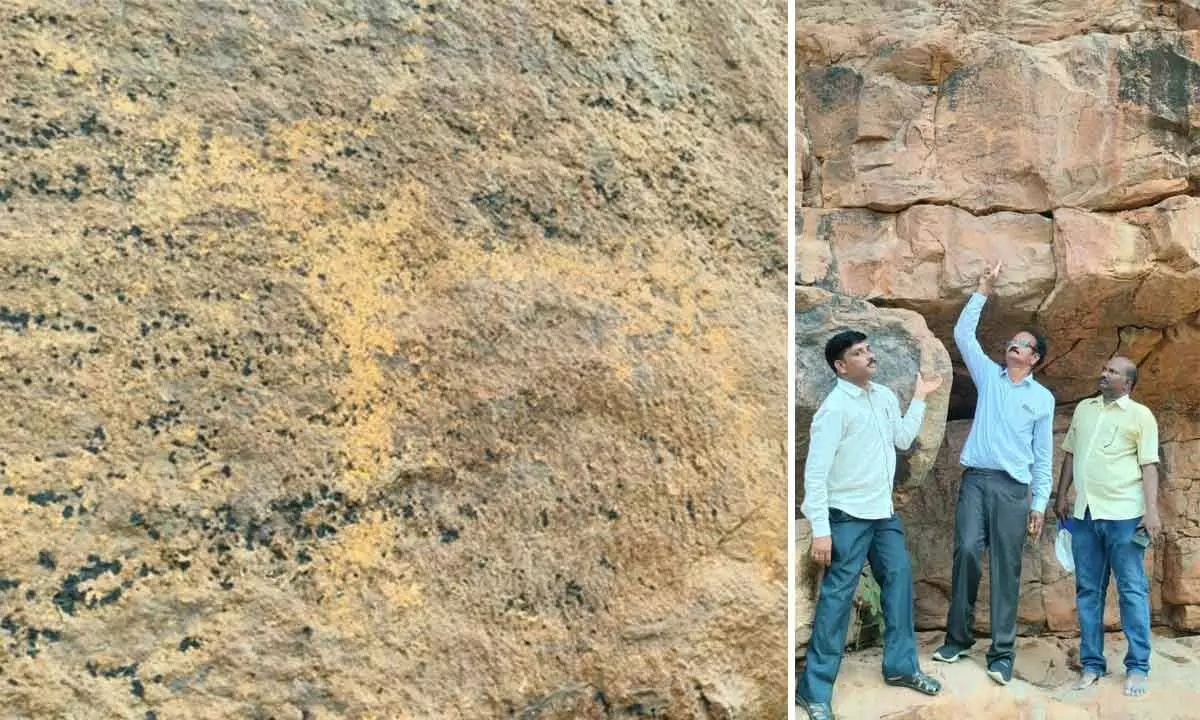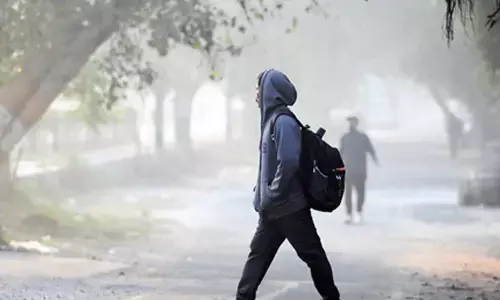6,000-yr-old prehistoric rock art found in Palnadu district

Dr Sivanagireddy with his team near Koppunuru village of Macherla mandal in Palnadu district
Archaeologist Dr E Sivanagireddy informs that he noticed a few megalithic burials called cairn circles dating to around 1000 BCE in agricultural fields of Koppunuru village
Vijayawada: Beautiful rock bruising of a stag and a man datable to the Neolithic period were found at Gundala-Veerlavagu valley located on the outskirts of Koppunuru village in Macherla mandal of Palnadu district.
Dr E Sivanagireddy, archaeologist and CEO, Pleach India Foundation, found them here on Sunday.
Dr Reddy, in a press release, said it was a chance discovery while he was conducting a survey under heritage awareness campaign called ‘Preserve Heritage for Posterity’ in and around Koppunur-Gundala where there are ruins of a Vaishnavite temple on the right side of Veerula vagu datable to Kakatiya period (13th century CE). After documenting the temple ruins, on his way back, Dr Sivanagireddy accompanied by a local youth M Durgempudi Yuganadhar Reddy and Macherla-based historian Pavuluri Satish continued the exploration in Veerula vagu, deep and narrow gorge with a good number of prehistoric rock shelters present there.
To his surprise, at a distance of one km from the ruins of the temple towards Koppunuru village, a rock bruising of a stag measuring 20 cm in length and 15 cm in height was delineated on the cliff of rock shelter at a height of 10 metres was spotted by the team. The rock art is dated back to 4000 BCE.
Dr Reddy said that there was another bruising of a human figure on the top of it. Both the figures were executed in stick type in the form of the stag and human figures, by hitting continuously with the stone tools and implements by the Neolithic folk during their stay in the seasonable camps. Sivanagireddy also noticed hand prints executed with white pigment belonging to the iron age, a little away from the find spot of the stag.
Interestingly he could notice a few megalithic burials called cairn circles dating to around 1000 BCE in the agricultural fields. Further investigations conducted by the team in the fields of Koppunuru, remains of bricks (59 x29x7 cm) and pot sherds called redware of the Satavahana times (1st century CE) are also found. Dr Sivanagireddy sensitised the local farmers on the archaeological and historical significance of the remains range in date between the prehistoric to the Satavahana times and appealed to preserve them for posterity. Dr Shyamasunder Rao, Designs-in-charge and Ramesh, an amateur archaeologist from Macherla participated in the exploration, said Dr Reddy.















